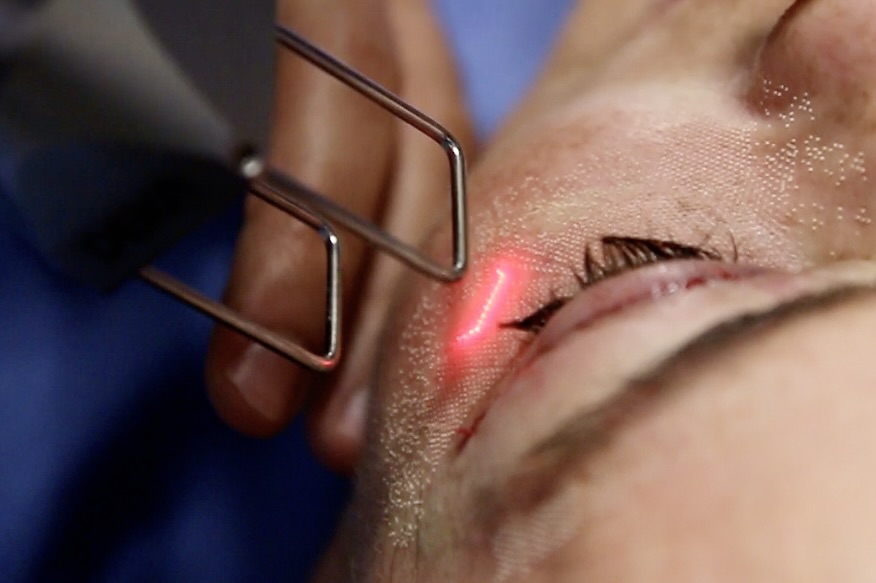Frank Ware is a patient who has benefitted from Dr. Madorsky’s skills twice! First, with a skin cancer reconstruction of his left cheek, and more recently with a “half facelift” on the right side of his face.
This patient exemplifies why we do what we do, embodying both the skin cancer and cosmetic goals of our practice.
Frank Ware came to the SCARS Center for surgical reconstruction of his left cheek post removal of melanoma. When Dr. Madorsky met Frank to treat his left cheek, he went right to the right side of his face, which has been paralyzed for decades due to a past surgical procedure. Years ago, Frank had an acoustic neuroma tumor in his cranial cavity, and when it was removed, the facial nerve was too involved to be saved. This resulted in facial paralysis. Frank has lived with this over the years, returning to his job as a middle school principal, and adapting to his strained speech and movement.
When Dr. Madorsky met and then examined Frank, he said, “I think we can do something about that.” He thought Frank would be a great candidate for a deep plane frace lift, well, at least half of one.
This brings up a very exciting parallel: The deep plane facelift technique used to correct the right-sided facial paralysis is what has driven development of the specialized flap (SMAS fasciocutaneous Island flap) used for the reconstruction of the melanoma of his left cheek.
In essence, the innovations in facial plastic surgery driven by cosmetic results also inform the methods for reconstruction of an area afflicted with skin cancer.
You glance in the mirror and notice the skin around your eyes looks a bit tired or droopy—maybe it’s time to consider a cosmetic procedure. But which one will help you look more refreshed: a blepharoplasty (eyelid lift) or a brow lift?
While both procedures focus on rejuvenating the eye area, they do so in different ways. Let’s take a closer look.
Blepharoplasty: Eyelid Surgery
Blepharoplasty targets the skin around the eyes and comes in two main types:
- Upper Eyelid Blepharoplasty: Removes excess skin and sometimes fat from the upper eyelid.
- Lower Eyelid Blepharoplasty: Addresses puffiness and under-eye bags by removing or repositioning fat and tightening loose skin beneath the eyes.

While this procedure can improve some dark circles, it won’t affect those caused by pigmentation or fine lines like crow’s feet. However, these issues can be treated with complementary options such as laser resurfacing, Botox, or fillers.
Brow Lift: Forehead Rejuvenation
As the name suggests, a brow lift works on the upper face—specifically the forehead and brows.
During the procedure, small incisions are typically made near the hairline. From there, tissue, skin, and muscle can be lifted to smooth forehead wrinkles, soften frown lines, and elevate drooping eyebrows.
This creates a more youthful, open look around the eyes. However, a brow lift does not remove excess eyelid skin—though it may improve the appearance of upper eyelid puffiness by lifting the brow itself. Surgery usually takes 1–2 hours and is often paired with other cosmetic enhancements like a facelift, blepharoplasty, or skin resurfacing.

Can You Combine These Procedures??
Yes, blepharoplasty and brow lift procedures can absolutely be combined, and in many cases, doing both provides the most balanced, natural-looking rejuvenation of the upper face.
While each procedure addresses specific issues, combining them can offer more comprehensive results. Sometimes what appears to be excess eyelid skin is actually the result of a sagging brow. In these cases, a brow lift alone might reduce the heaviness. But if there’s still extra skin or puffiness on the eyelids, a blepharoplasty may be needed as well.
Benefits of Combining Both Procedures
-
More dramatic, yet natural-looking results
-
Improved balance between the forehead, brow, and eyelids
-
Single recovery period instead of two separate surgeries
Dr. Jane Kim, a board-certified oculoplastic surgeon, will assess your facial anatomy and goals to determine which procedures are best for you.
Many people consider rhinoplasty because they want to smooth out a bump on the bridge of their nose or change its overall shape.
The “Old Way” vs. a “Newer Approach” to Nose Reshaping
Traditional Method: Think of the traditional way like sculpting from the top. To reduce a bump or lower the bridge, surgeons would remove bone and cartilage directly from the top of your nasal bridge. While this can fix the bump, it can sometimes change the natural lines of your nose quite a bit, and there’s a risk it might look a little “done” or unnatural.
Dorsal Preservation Rhinoplasty (The Newer Approach): This is what we’re excited about! “Dorsal” just refers to the bridge of your nose. “Preservation” means we try to keep its natural structure and lines as much as possible.
How it’s Different: Instead of removing bone and cartilage from the top of the bridge, the surgeon makes changes from underneath. Imagine carefully lowering the entire bridge structure from below, rather than chiseling away at the surface. This helps keep the original smooth lines of your nose intact.
The Goal: To give you the results you want (like removing a bump) while respecting and maintaining your nose’s unique, natural appearance.

Why Patients Often Prefer This Preservation Technique
The results with dorsal preservation rhinoplasty tend to make patients happier, which means it’s less likely you’d need a follow-up surgery (revision rhinoplasty). Here’s why:
- Keeps Your Nose Looking Naturally Yours: It helps maintain the natural width and smooth contours of your nasal bridge.
- Better for Straightening a Crooked Nose: It can lead to improved symmetry if your nose is a bit crooked.
- Less Reconstruction Needed: Your surgeon usually needs less cartilage to rebuild or support the nose.
In short, dorsal preservation rhinoplasty is an advanced technique that aims to correct issues like a nasal bump while ensuring your nose still looks like your nose, fitting naturally with your face. It’s about refining, not completely rebuilding, to achieve a look you’ll love.
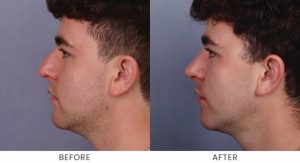
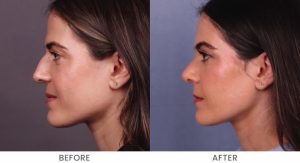
How do you achieve a more youthful face if you are not ready for or interested in a facelift? Can you get great results without a facelift? We say, “Absolutely.” Short of a facelift, we recommend three effective procedures for a more youthful, refreshed look.
BLEPHAROPLASTY
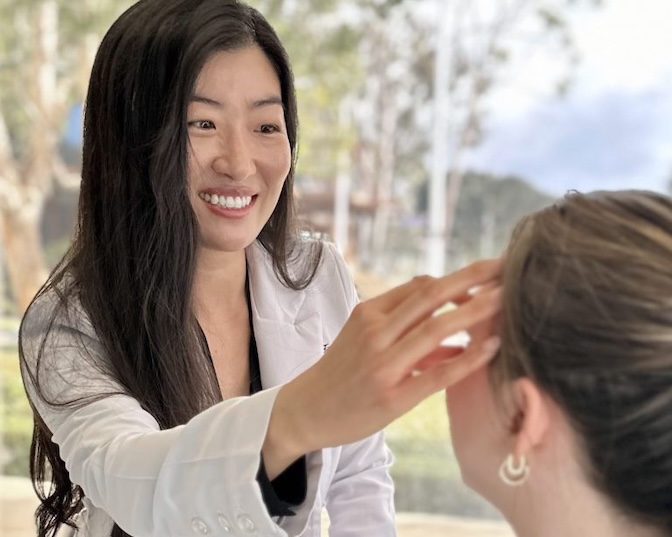
Blepharoplasty is a surgical procedure that improves the appearance of your eyelids. It helps reduce the look of tired eyes from your lower lids and removes drooping skin from your upper lids. You can focus on just the upper or lower lids, or address both at the same time.
CO2 LASER RESURFACING
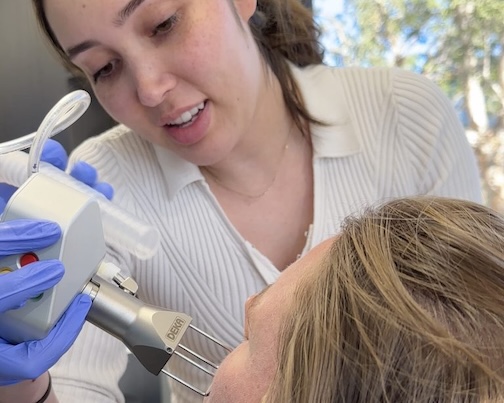
CO2 laser treatment aims to improve the appearance of the skin by removing the top layer and stimulating the formation of new skin cells. CO2 Laser Resurfacing is used to tighten the skin and to treat fine lines. It also treats wrinkles, sun-damaged skin, and scarring.
FAT TRANSFER
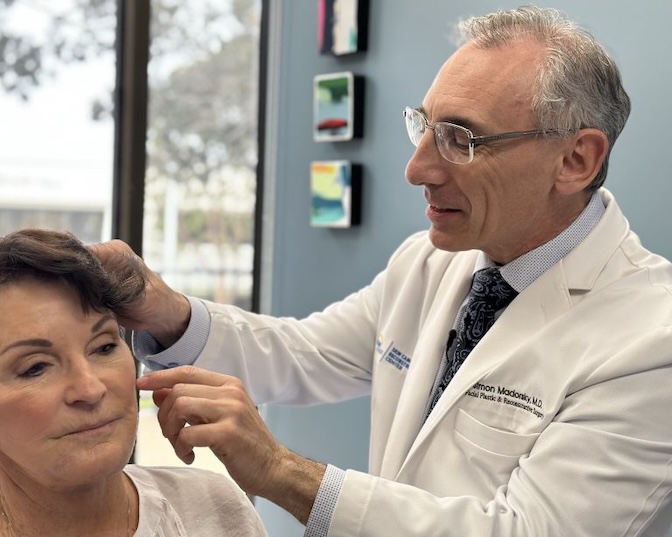
Facial fat transfer uses a person’s own existing body fat to restore volume to and plump sunken or sagging areas of the face. This procedure is used to treat deep creases on the forehead or between the eyebrows as well as hollow areas under the cheeks and eyes. It can also aid with contouring around the nose, temples, upper lip and the jaw.
Each of these procedures requires confirmation that you are a candidate, as well as some downtime.
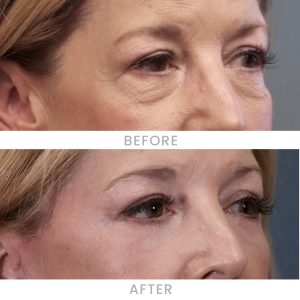
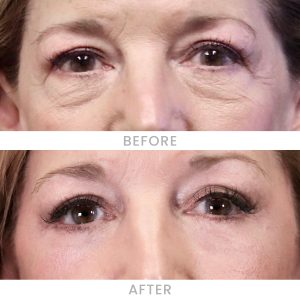
This patient had all three of these procedures: lower eyelid surgery with fat grafting and CO2 laser resurfacing of the skin around the eyelids.
When Should You Choose a Facelift?
While we have described some effective procedures for facial rejuvenation, sometimes these methods don’t do the trick.
Maybe you have tried injectables and chemical peels for a while, and they do not provide the long-term results you want. Or perhaps laser or radio frequency treatments just are not achieving what you want.
Whatever the reason, facelift surgery can achieve results that non-surgical results cannot match. Facelift surgery can reposition and lift facial tissues, which is something non-surgical options cannot replicate. It can also remove excess skin, which can roll back the clock on the face by years.
If your silicone gel implants are more than two decades old, it’s crucial to meet with a plastic surgeon to assess their condition and explore your options. Dr. Suzanne Quardt, a board-certified plastic surgeon, offers breast revision services to patients in Newport Beach and nearby areas.
The primary concern with older implants is the possibility of leaking or rupturing. It’s important to note that silicone gel implants from over 20 years ago differ significantly from today’s versions. Advances in implant technology have led to thicker outer shells that are more rupture-resistant and the development of more cohesive silicone gel that doesn’t leak as easily. Modern implants, classified as 4th to 6th generation, are vastly improved over older models.
While mammograms are effective for early breast cancer detection, they aren’t very reliable for spotting implant ruptures unless the damage is severe enough to appear on the scan. Instead, watch for changes like hardening of the breast tissue, known as capsular contracture, or noticeable flattening of the breast, which may indicate a ruptured implant. Pain in the breasts warrants an immediate check-up, though many women with ruptured implants experience no discomfort. Silent ruptures, which occur without obvious symptoms, are best detected through MRI, a highly accurate diagnostic tool for this purpose.
If your old implants are saline, replacement is only necessary if issues arise. A saline rupture is harmless as the body absorbs the saline naturally. However, ruptured silicone gel implants can lead to intra-capsular or extra-capsular ruptures. Intra-capsular ruptures contain the silicone within the surrounding scar tissue, while extra-capsular ruptures allow the silicone to escape, potentially reaching the skin or lymph nodes. Immediate removal is recommended for ruptured silicone implants, as advised by manufacturers.
Even without a full rupture, the outer shell of a silicone gel implant may degrade over time, allowing the silicone to leak gradually in a process called silicone bleed. This can cause a capsular contracture, where the tissue around the implant hardens. In some cases, no visible signs of leakage are present, yet the implant may still be compromised.
Many women, for a variety of different reasons, decide to remove their breast implants. One of the biggest concerns is “how will my breasts look after removing my implants?” The volume loss can sometimes create a “caved in” deformity of the upper and central breast after removing the implant. This type of volume loss can NOT be corrected with breast lifts alone.
Dr Suzanne Quardt’s breast reconstruction technique after implant removal, also called explant surgery, offers an innovative and personal approach to addressing a common concern for women undergoing explant surgery.
Her procedure, which she calls the “Q Flap,” enhances the breast’s fullness without using replacement implants by using a patient’s own native breast tissue.
For the appropriate candidate, Dr Quardt has taken her knowledge and training in Breast Reconstructive Surgery to help prevent the explant deformity. Using her intraoperative technique, she performs a rearrangement of the soft tissues of the breasts to create a fuller-looking breast, particularly in the specific area of volume loss after removing the breast implants. By transposing a patient’s own tissues into the void created by the explants, Dr Quardt gives women a much prettier and fuller yet natural-looking breast result after implant removal.
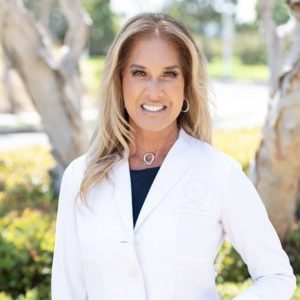
“This is a great procedure for women who want their implants removed but want to maintain fullness in their breasts.”
Suzanne Quardt, MD
Call Us to Schedule a Consultation!
(949) 880-0062
“A Mommy Makeover is just a Breast Augmentation and Tummy Tuck, right?”
Not according to Dr. Suzanne Quardt (aka Dr Q). That is a limiting definition of what this life-changing transformation can include. In Dr. Quardt’s practice, a Mommy Makeover is any combination of procedures that a woman and her plastic surgeon deem beneficial to make her look and feel her best. There is no set formula, but more of a “mixing and matching” of specific procedures tailored to achieve each patient’s desired results for this new stage in her life.
Dr. Quardt guides each patient through the process, educating them on their options, what is realistic and best for them, and how to best prepare for and recover from their procedures.
“It is so rewarding for me, as a female surgeon and mother, to help women to look and feel their best after the wonderful, life-changing (yet body-altering) event of becoming a mother.”
Mommy Makeovers can include any combination of a wide range of procedures such as the following:
- Breast Augmentation – with implants, or through fat transfer
- Breast Lift – to create perky breasts by removing excess skin, or to enhance breast shape and breast size along with implants
- Breast Reduction – to reduce overly large breasts and also create a lift
- Liposuction – to the abdomen, hips, thighs, back in order to create a waistline and contour the body
- Tummy Tuck or Mini Tummy Tuck – to remove excess skin and fat and flatten the underlying abdominal muscles (often combined with liposuction)
- Labiaplasty – to reduce redundant outer lip skin/tissue
Pregnancy, childbirth and breastfeeding certainly change a woman’s body, but the Mommy Makeover isn’t about “restoring a pre-pregnancy body” per se. It is more about determining a woman’s unique needs and goals moving forward, and establishing a road map with the advice and expertise of her surgeon to attain the optimal body aesthetic for each woman’s unique stage in their lives.
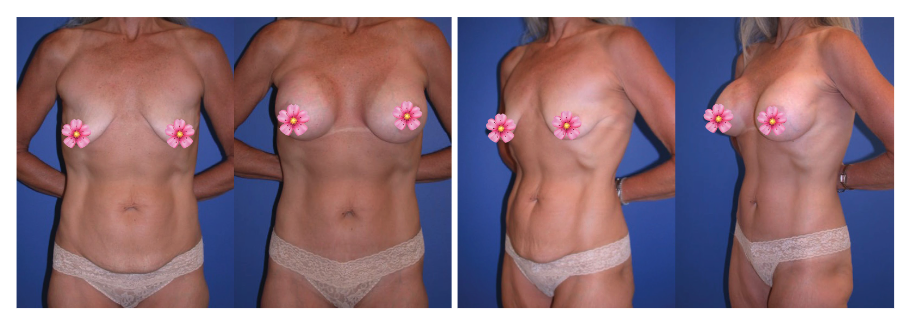
This 49-year-old mother complained of loss of fullness of her breasts after having one child and breastfeeding. She was very fit, but didn’t like a small flap of skin on her lower abdomen. She underwent a Breast Augmentation with Silicone Gel Implants as well as Mini Tummy Tuck.

This 30-year-old mother of one lost about 80 pounds after her pregnancy. She desired fuller breasts and a flat tummy. She underwent a Breast Augmentation using “Gummy Bear” Implants, a Tummy-Tuck, and Liposuction of her torso.
The jawline can be a crucial part of facial aesthetics. A strong jawline in men is often associated with attractiveness and confidence. For women, a jawline can represent youth and beauty. We offer two approaches to refining the jawline: liposuction and injectables.
LIPOSUCTION
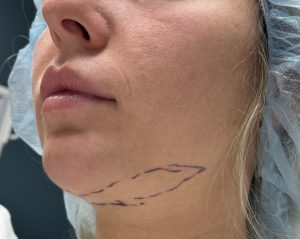
Liposuction of the jawline is a procedure where a skilled surgeon removes excess fat to improve the jaw’s contour. It can be done on its own or combined with other facial procedures. The results of this procedure are considered permanent for most patients.
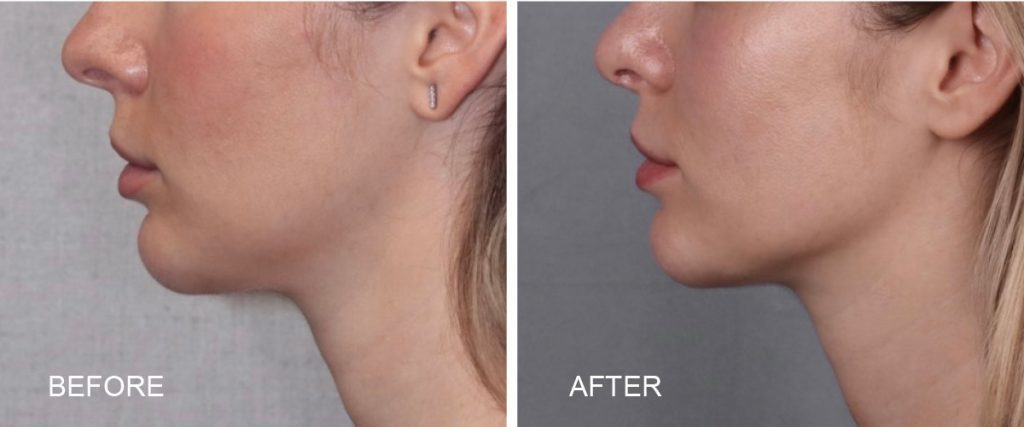
INJECTABLES
Allergan (the maker of BOTOX and JUVEDERM) has created a product specifically for the jawline. This long-lasting filler, called VOLUX, is FDA-approved and is the first and only HA filler specifically designed for jawline definition.
VOLUX is a slightly more cohesive and thicker formula than JUVEDERM VOLUMA. Both of these fillers build volume and create a lift beneath the skin, but while VOLUMA is FDA-approved for the chin and cheeks, VOLUX is FDA-approved to treat the jawline.
The procedure only takes a few minutes, and any swelling is dramatically improved within 48 hours. Results last between 12 and 18 months.
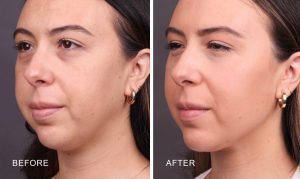
Kenny Bernstein, known as the King of Speed, is a renowned drag racer and successful buisnessman. In his nearly 40-year career as a racer, he collected dozens of event victories and multiple championship titles, most of these with his iconic Budweiser King Race Team.

He is nicknamed “the King of Speed” because he was the first driver to break 300 miles per hour in the standing-start quarter mile. Bernstein owned King Racing, which he drove for in the NHRA and fielded various cars in other racing series such as IndyCar and NASCAR.
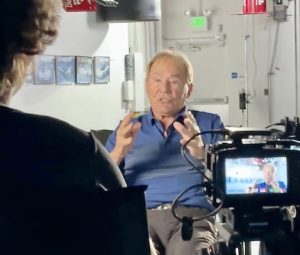
In this installment of Skin Cancer Stories, we get to know the King of Speed, talk to him about the ups and downs of his illustrious racing career, and explore his journey with skin cancer at the SCARS Center. It also details his reconstructive surgery post skin cancer removal.
Are you noticing excess or loose skin around your eyes? When it comes to lifting and tightening the skin in this area, we have two approaches, one surgical and one done with a laser. Often our recommendation for optimal results is to combine the two.
SURGICAL APPROACH: BLEPHAROPLASTY
Blepharoplasty is intended to enhance the upper and/or lower lids, to create a more refreshed, youthful look. For the upper lid, the procedure involves making an incision in the natural crease of the eyelid, and then removing and reshaping the skin, muscle, and fat that deflate and droop with age and sun exposure.
Blepharoplasty can also be performed on the lower eyelid. As people age, the tissue that holds the fat in place can loosen and the fat can protrude, giving the appearance of bags under the eyes. These bags can be repositioned and reshaped.
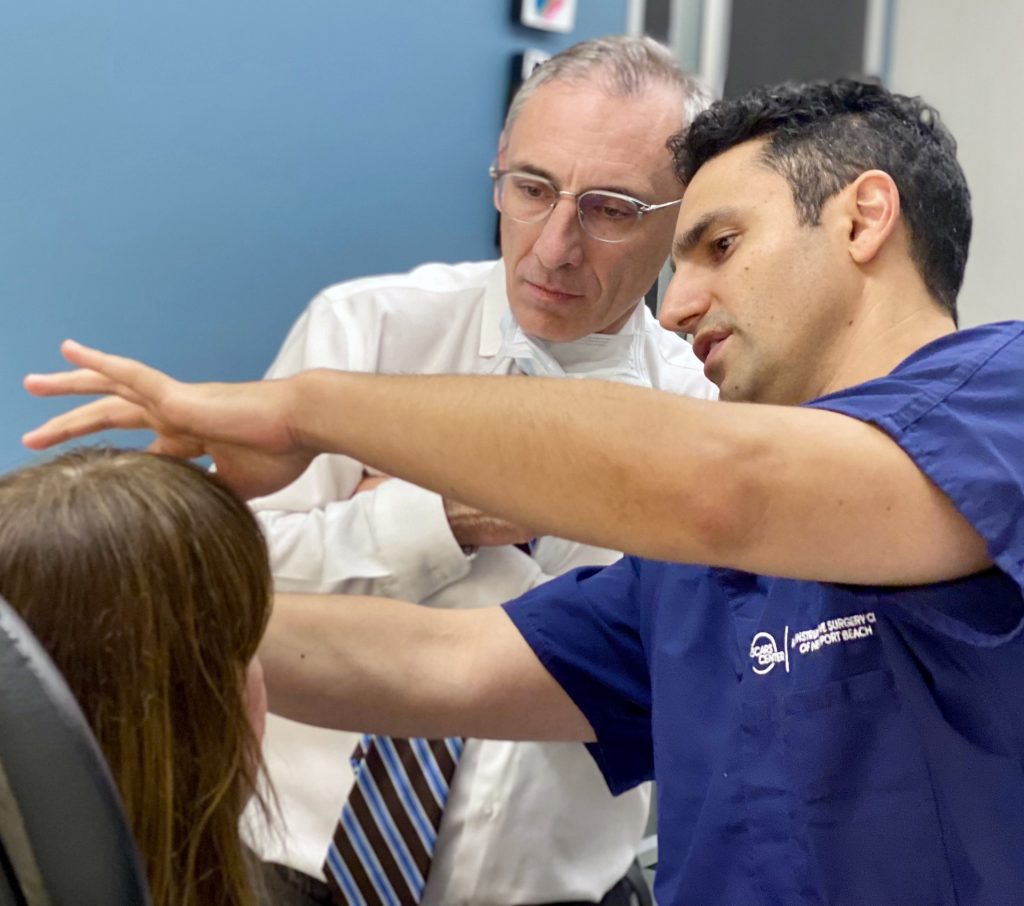
THE MAGIC OF CO2 LASER RESURFACING
CO2 laser resurfacing is an excellent way to tighten skin and reduce discoloration of the skin around the eyes.
This laser tightens minor excess skin on the eyelids, reduces of signs of aging in the eye area, and the completely renews the skin. And with the CO2 laser we can tailor treatment according to the nature and extent of photodamage, wrinkling, skin type and individual requirements for recovery time.
When considering a fractional CO2 laser for the eyes, remember that the effects can take up to 8-12 weeks to see, so plan accordingly!
This procedure can be done on its own or in conjunction with eyelid surgery.
